Pandemic Planning for Your Community
In the wake of this outbreak, many of us have begun asking questions about our role in COVID-19 awareness and prevention. As a school safety company, the nSide team is always here to help communities amid crisis situations. We understand that this is a concerning and stressful time for many, so we’ve put together a review of CDC recommendations that is applicable to both school systems and community members alike.
As of today (March 24, 2020 at 3:00 pm), there are 44,183 confirmed cases of coronavirus in the US, and 196 confirmed cases in the state of Alabama. Click here to see the coordinating list of confirmed cases, per county, in Alabama.
List of symptoms and emergency warning signs provided by the CDC:
These symptoms may appear 2-14 days after exposure (based on the incubation period of MERS-CoV viruses).
- Fever
- Cough
- Shortness of breath
If you develop emergency warning signs for COVID-19 get medical attention immediately. Emergency warning signs include*:
- Trouble breathing
- Persistent pain or pressure in the chest
- New confusion or inability to arouse
- Bluish lips or face
Household Planning
Along with awareness of symptoms, the CDC recommends creating a household plan. In the event that you or someone you live with falls ill, it’s best to be prepared in advance. Designate a sick room or space, where you can safely quarantine with low risk of physical contact with others. It’s suggested that two weeks worth of over the counter medications and food are stocked, along with a process for having food delivered if possible. Guidelines also advise arranging any needs for communication among friends and family, as well as organizing childcare plans if needed. In addition to preparing your surroundings, it is necessary to take proper care of emotional health and communicate with others if you begin to feel a decline take place. Isolation due to quarantine can lead to anxious or depressive moods, so establishing emotional support is equally as important as assembling your household plan.These strategies are simple in nature but far-reaching in any effort to care for your home.
In addition to this, the CDC recommends we actively engage in social distancing. Many of us are in current practice of this and abstain from groups of people or large gatherings of any sort. But if you’re wondering how much social distancing does for you and those around you, their guidance would encourage you to consider the rapid pace at which coronavirus has spread. It is never our desire to evoke fear or panic for anyone, however we do recognize that grasping the communicable nature of this illness is a crucial element to pandemic planning. Maintaining this practice and limiting physical contact is one of the most significant things you can do to support any plan. As unfortunate as it feels at times, social distancing is in fact the best way to care for your friends and loved ones right now.
Pandemic Planning for Schools
The CDC also stresses that pandemic planning be assessed as seriously as the day-to-day management of warning signs. Remaining informed about the local coronavirus situation is one of the most critical steps that your schools can take to properly recover from this pandemic. With oncoming news and school closures extending each day, maintaining awareness and a consistent stream of communication with your team is a foundational piece of your school’s plan of action.
Likewise, it’s essential that your faculty continues to communicate with households as often as they receive new information. Once ensured that information is factual and from a reliable source, it needs to be distributed as quickly and sensitively as possible among guardians. In crafting this circle of communication among school communities, you have the opportunity to effectively carry out a culture for school safety within your district.
Finally, as you aim to respond and recover from this event, the students and children in your home should remain the central concern. Adjusting to a new routine and new learning experience can be difficult for many children to take on. As any educator knows, a large portion of caring for students goes beyond their education. Partnering with public health officials to maintain health and meal services for students, while publicly announcing the implementation of these projects, will bolster the support system for many students at home.
Our team is always here to assist you in emergency situations, and we recognize that this pandemic is unique to any experience we’ve had in recent years. Although we can’t be sure of what’s to come, our priority for maintaining your school’s safety is unwavering. We will continue seeking innovative ways to build up this community and provide you with relevant, accurate information to come. As always, if we can be of further assistance to you please feel free to reach out at help@nside.io. If there is anything else we can do to help you cope with these transitions, please do not hesitate to connect with our team.
Links to Relevant Resources
Last week, we released links to our S2:E1 Podcast, School Pandemic Resources Page, Pandemic Planning Assessment, and Public Health Planning folders within the nSide platform. These resources are available with the intent to guide your next-steps and encourage you along the way. We ask that you contact us at resources@nside.io for any questions or additional materials you might find helpful!




